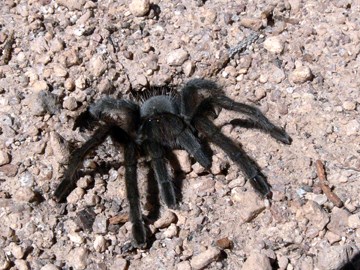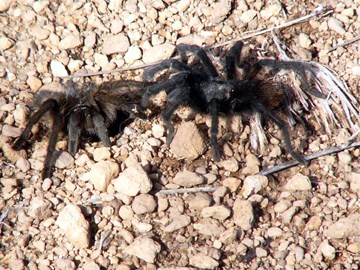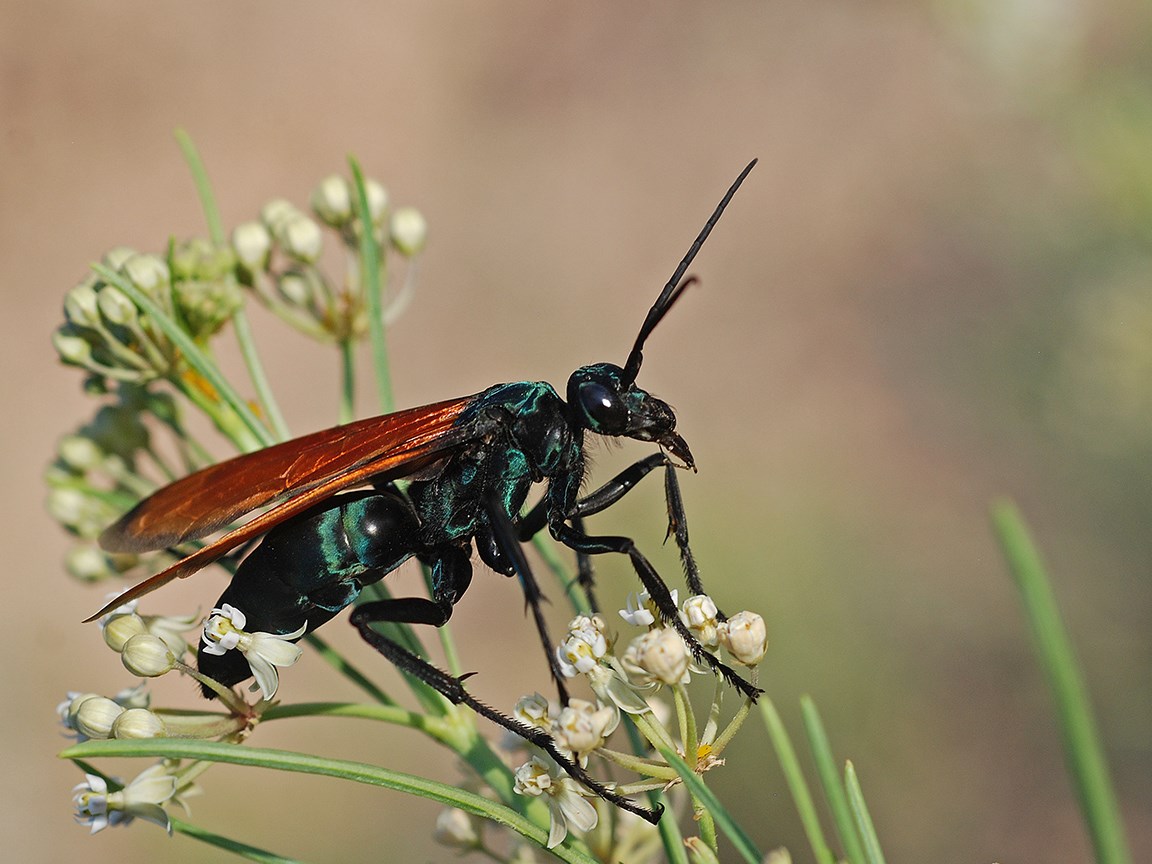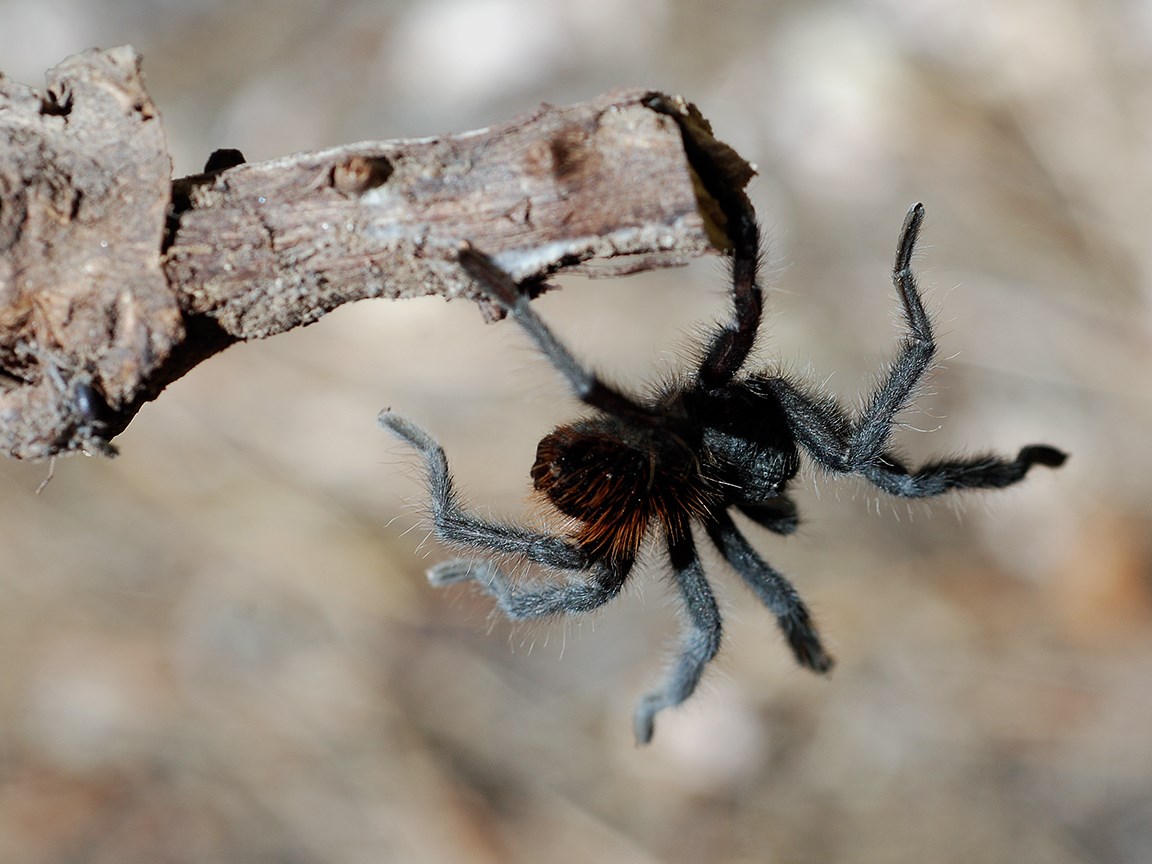
Photo by Sally King Tarantulas are the largest spiders in the Southwest. In Bandelier, they are rarely seen except in autumn (mostly October), when adult males leave their burrows in search of female tarantulas. Females can live to be up to 20 or 25 years old. Males only live for approximately 8 - 10 years. Tarantulas amost never leave their burrow during the day but hunt for their food, smaller insects, at night. 
Photo by Sally King Male Tarantula Seeks Female Tarantula 
Photo by Sally King Tarantula hawks are large blue-black wasps with bright orange wings. They feed on nectar from flowers but are most famous for their unique relationship to tarantulas. A female tarantula hawk who is ready to reproduce must find a tarantula burrow. Tapping and strumming webbing at the burrow entrance, she attempts to lure the inhabitant tarantula out. If the tarantula responds what can be a very long battle ensues. More often than not the tarantula hawk wins by delivering a paralyzing sting to the tarantula. Unable to resist, the tarantula is dragged (this can be quite a long distance over downed trees and large rocks) to a pre-dug burrow and dropped in. The tarantula hawk then lays her eggs on the still living tarantula and leaves, covering the den's entrance. When the tarantula hawk eggs hatch into larvae, the tarantula becomes their first meal. 
photo by Sally King |
Last updated: October 5, 2020
